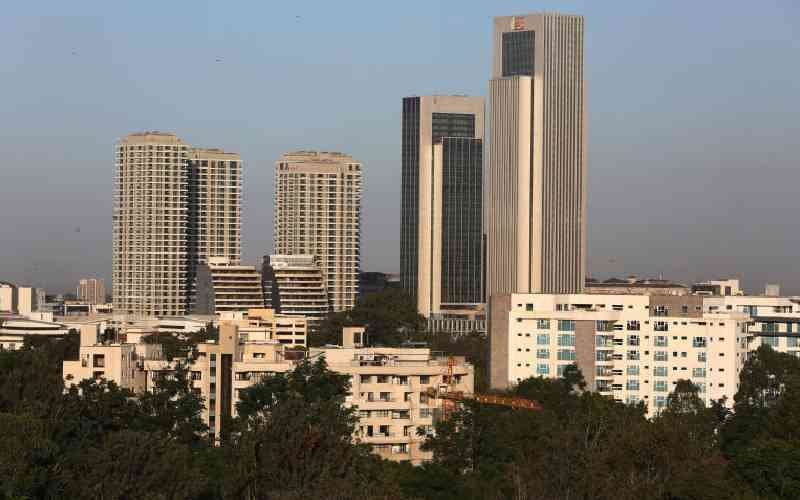
He who goes gently, goes safely; he who goes safely, goes far.
These are the words of Scottish geologist and explorer Joseph Thomson. He avoided confrontations among his porters or with indigenous peoples, neither killing natives nor losing any of his men to violence.
It is this aversion to violence, complemented by remarkable stamina and fitness that made him one of the greatest pioneer explorers of the African continent.
His most famous exploit required him to ascertain if a practicable direct route for European travellers existed through the Maasai country from any of the East African ports to Nyanza.
This expedition made him the first European in record to walk from Mombasa to Lake Victoria in the late 1880s.
Source of life
After going past lakes Naivasha and Elementaita on his way to Lake Baringo via Mount Kenya, Thomson also came upon a picturesque range of mountains in the Laikipia landscape.
He would name the imposing masses rising to heights of between 12,000 to 14,000 feet, Aberdare Range, in honour of the President of the Royal Geographical Society which dispatched him to those lands.
Still on his journey, his legacy was further cemented with yet another key discovery. At the base of the Aberdare Range to the West, flowed Ewaso Narok, the main of the 20 tributaries pouring into the indefatigable River Ewaso Ng’iro.
The tributary dropped a sheer 80 metres over a ledge of volcanic rock to create a magnificent waterfall that he could not help but name after himself.
Interestingly, Thomson who died in 1895 — aged 37 — from illnesses he contracted during his expeditions, failed to mention the source of the falls in his accounts yet just a few kilometres up stream bubbled a secret catchment lake from whence Ewaso Narok sources life. The lake was also a source of life for the Maasai and they named it Ol Bollosat.
Fast forward to the computer age and I was on the search for this mysterious lake.
The search led me to Nyandarua County.
The county, whose mainstay is agriculture constitutes five constituencies of Ol Kalou, Kinangop, Kipipiri, Ndaragwa and Ol Joro Orok.
Stay informed. Subscribe to our newsletter
It is easily accessible from Nairobi by road. A day drip is possible, but an overnight stay was recommended.
The two-hour drive from the capital is not complete without a stopover for farm fresh dairy products at some farm shop on the outskirts of Naivasha.
This was followed by a scenic 60-kilometre drive from Gilgil turn-off to the county’s headquarters, Ol Kalou.
Twenty kilometres from Ol Kalou town, a significantly smaller township called Kasuku stands where a signage bearing the words Lake Ol Bollosat indicates a right turn.
Taking this turn leads to Ol Joro Orok constituency where the lake is nestled.
The lake suddenly springs on you. Immense quiet shaded by the green Aberdares. With a front-row view to serenity is Kichakani Paradise, a boutique hotel that consists of Swiss-styled chalets and Maasai-inspired bandas.
Barbecue grills
The cottages have large windows that allow views of the expansive Aberdare Ranges and the bandas mimic manyatta architecture in many ways.
While the bandas are standard en-suite rooms, each cottage can accommodate five people and boasts a fireplace and a veranda where dinner can be served. They are also equipped with kitchenettes with a double burner gas cooker.
All cottages have barbecue grills and charcoal can be provided upon request.
If cooking is too much trouble, the establishment has a kitchen where meals can be prepared for guests.
Hot water, heated using a fuel wood burner is provided even as guests are advised to carry warm clothing for the chilly and windy evenings. I was in luck as my visit coincided with the unveiling of Ol’Bolossat Cabin.
If you ever wanted the Kenyan version of vacation in the Alps, where skiing is replaced by refreshing walks and early morning hippo sightings, then this is your perfect spot.
Back to the lake.
Despite suffering neglect, Ol Bolossat impressively fights on.
It is not all doom and gloom though.
The recent rise in water levels of the lakes in the Rift Valley seem to have favoured Ol Bolossat, which covers an area of 43 square kilometres.
The water level during my visit was enough for a fishing boat to sail in.
The lake has a significant catfish population attributed to an accident.
It is said that in 1998, the walls of a private fishpond collapsed due to heavy rains and the fish were swept in to the lake.
There are over 15 species of mammals; the main show of the lake being the resident hippo families.
Then there is the Ol Bolossat Forest that occupies approximately 3326 hectares with a total forest boundary covering 34 kilometres.
Several wetlands are also found within the forest and are important conservation areas.
There are also attractive natural caves, water falls, dams, quarries and clay soil areas that are worth checking out.
Indigenous tree species including sandalwood can be seen here.
Wild animals in the forest include Colobus monkeys, baboons, hedgehogs and dik diks.
The lake holds a wealth of over 100 species of birds and is a sanctuary for thousands of migratory birds as well as different varieties of water birds such as ducks, geese, gallinules, coots and ibises.
The Lake Ol Bolossat Bird Shooting Club at one time even coordinated duck shooting and the proceeds benefited local schools and other community projects.
Not anymore.
The beautiful crested crane has also turned the lake into a favourite layover and is a common sight.
There is also the rare African Black Duck Anas sparsa, the endangered and endemic Sharpe’s Longclaw Macronyx sharpie and the gorgeous Malachite Kingfisher Alcedo cristata.
This popular destination among lovers of bird life was, in 2008, accepted as the 61st Important Bird Area for Kenya and the seventh Important Bird Area in central Kenya.
Even as the county government plans to renovate 18 former Happy Valley Homes to attract tourists, their biggest bet remains Lake Ol Bollosat.
Its central location, with respect to the national tourist circuit and proximity to the equator, gives the site an unassailable advantage.
 The Standard Group Plc is a
multi-media organization with investments in media platforms spanning newspaper
print operations, television, radio broadcasting, digital and online services. The
Standard Group is recognized as a leading multi-media house in Kenya with a key
influence in matters of national and international interest.
The Standard Group Plc is a
multi-media organization with investments in media platforms spanning newspaper
print operations, television, radio broadcasting, digital and online services. The
Standard Group is recognized as a leading multi-media house in Kenya with a key
influence in matters of national and international interest.
 The Standard Group Plc is a
multi-media organization with investments in media platforms spanning newspaper
print operations, television, radio broadcasting, digital and online services. The
Standard Group is recognized as a leading multi-media house in Kenya with a key
influence in matters of national and international interest.
The Standard Group Plc is a
multi-media organization with investments in media platforms spanning newspaper
print operations, television, radio broadcasting, digital and online services. The
Standard Group is recognized as a leading multi-media house in Kenya with a key
influence in matters of national and international interest.










